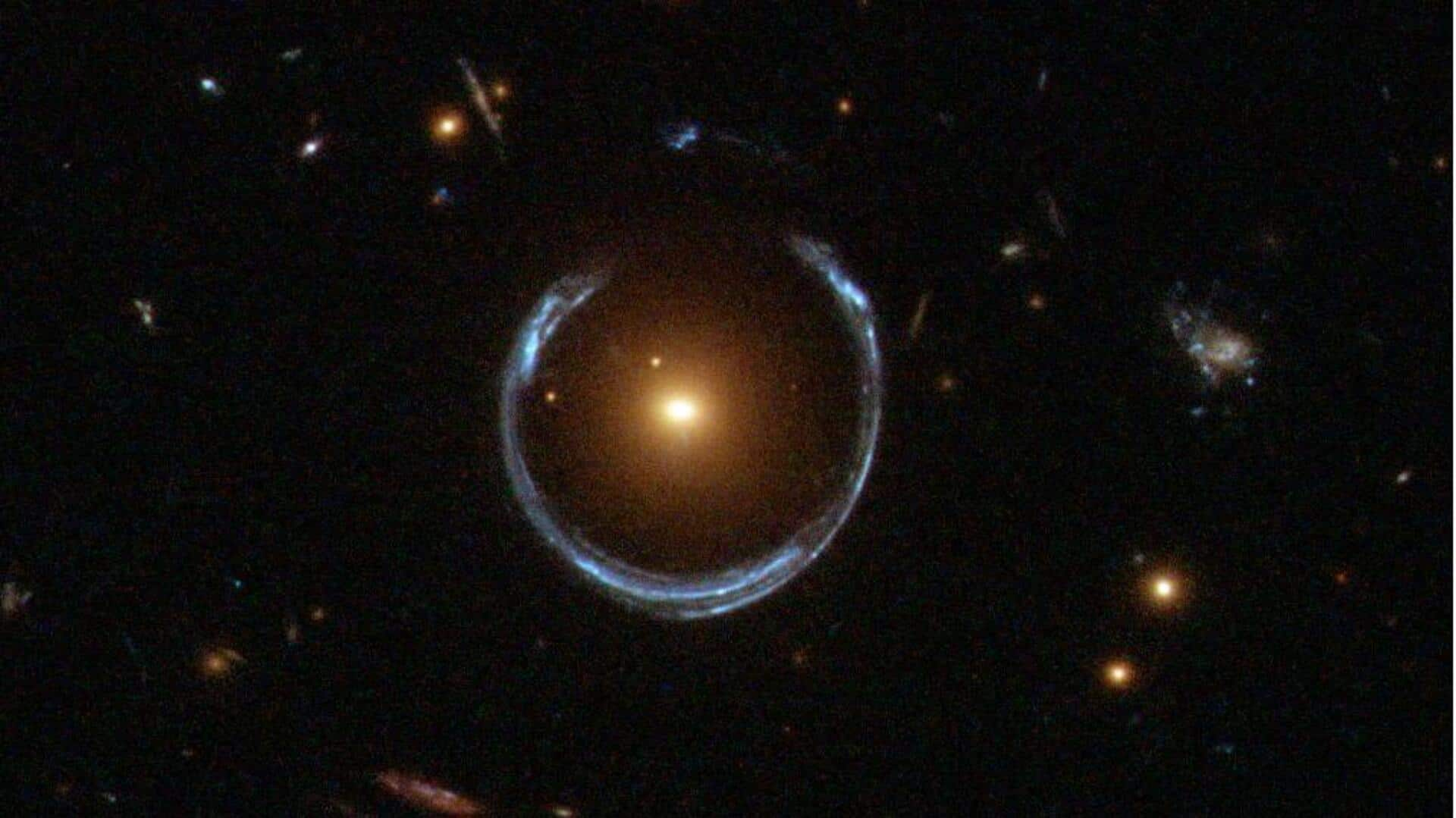
'Einstein ring'—an extremely rare space-time warp—discovered close to Earth
What's the story
The European Space Agency's (ESA) Euclid space telescope has photographed an incredible astronomical phenomenon called an 'Einstein ring.'
The image shows a striking Einstein ring surrounding the galaxy NGC 6505, situated 590 million light-years away. This is the first time this ring of light has been detected.
The ring originates from a more distant and luminous, unnamed galaxy roughly 4.42 billion light-years away. Its light has been warped and magnified by the gravity of NGC 6505.
Cosmic lenses
Einstein rings and their role in space exploration
Einstein rings, as predicted by Albert Einstein's general theory of relativity, are formed when light bends around massive objects in space.
This means galaxies can act as giant lenses.
These rings are priceless tools for astronomers as they unveil objects otherwise hidden from sight and reveal the mass of the intermediate galaxy—including any hidden mass in the form of dark matter.
Astronomical insight
Einstein ring: A rare and significant discovery
Professor Stephen Serjeant, an astronomer at the Open University, expressed his excitement about the discovery.
He described it as "a beautiful, extraordinary, thrilling and lucky find in our first data."
He further explained that such a flawless Einstein ring is extremely rare and provides a unique view of a background galaxy through the distorted space-time of a very nearby foreground galaxy.
Dark matter exploration
Euclid telescope's mission and capabilities
In this case, astronomers believe that the foreground galaxy contains about 11% dark matter. That's a pretty small number given that dark matter is believed to dominate the total mass content of the universe.
In fact, the main objective of ESA's €1 billion mission is to solve the mysteries of dark matter and dark energy, which make up 95% of the universe.
Cosmic mapping
Euclid's unmatched observational skills and future prospects
The Euclid telescope, which can detect galaxies as far as 10 billion light-years away, is set to create the largest cosmic 3D map ever made.
This will allow astronomers to deduce the large-scale distribution of dark matter and uncover the influence of dark energy, a mysterious force that's accelerating the expansion of the universe.
The latest image highlights Euclid's unmatched capability for precise observations, revealing new structures in the nearby universe too.
Unseen galaxy
Euclid's discovery within a well-known galaxy
Dr. Valeria Pettorino, ESA Euclid project scientist, was fascinated by the fact that this ring was seen within a well-known galaxy, first discovered in 1884.
She said "this demonstrates how powerful Euclid is, finding new things even in places we thought we knew well."
The more distant galaxy had never been seen before; now scientists have an ideal tool to study it in greater detail than would be possible without the lens.